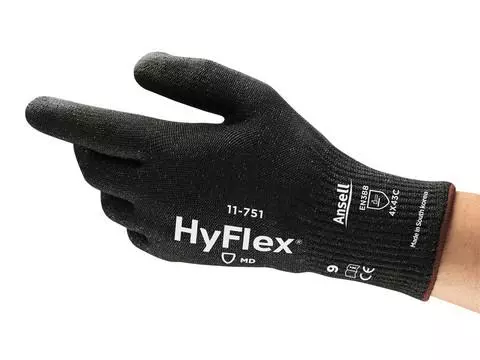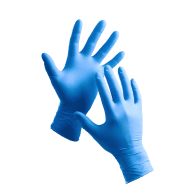HyFlex 11-751VP Vend
5.0 / 5
Product description
DescriptionHeightened durability: HyFlex® 11-751 PU-coated gloves demonstrate superior durability, with EN level 4 and ANSI level 6 abrasion resistance
Advanced protection: INTERCEPT™ Cut Resistance Technology yarn also grants them EN ISO C/ ANSI 4 cut resistance, making them safer and preventing workplace injuries
Considered aesthetics: HyFlex® 11-751 industrial gloves have been designed with integrated dirt masking, for longer wear
Certified performance: These safety gloves officially comply with Centexbel standards EN 420, for general requirements, and EN 388, for mechanical hazards
Guaranteed convenience: For added practicality, HyFlex® 11-751 industrial working gloves are available in vend pack form, for easy access and re-application
Recommended for
General maintenance
Hardware assembly
Machining / Stamping / Cutting
Raw material handling
Seat and frame build
Product Details
Antistatic : No
Length : 224-269Mm, 8.81 - 10.59 Inches
Available Sizes : 6, 7, 8, 9, 10
Coating Color : Black
Coating Material : Polyurethane
Construction : Knitted
Cuff Style : Knitwrist
Finishing : Palm Coated
Gauge : 10
Liner Color : Black
Liner Material : Hppe, Fiber Glass, Nylon, Spandex
Silicone Free : No
Washing Temperature : 40 °C (104 °F)
About Coated Cut Protection Glove
Coated Cut Protection Gloves provide essential hand safety with cut-resistant materials and specialized coatings for enhanced grip. Ideal for construction, manufacturing, and handling sharp materials, these gloves offer both protection and dexterity for demanding work environments.
- Cut Resistant
- Machine Washable
- Hand Protection
Standards and labels
Ansell delivery terms
Free delivery for all Ansell products
1 372,44 €
Price per 24 packages (144 pairs)
9,53 € / pair
Free delivery
A carton contains 24 packages (144 pairs)



